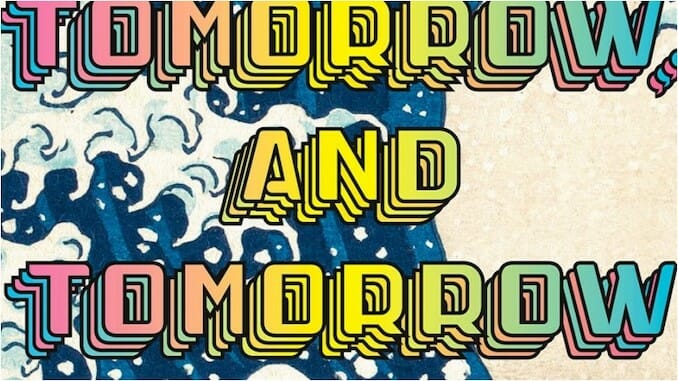Tomorrow, and Tomorrow, and Tomorrow Is Gabrielle Zevin at Her Most Expansive

Before Gabrielle Zevin captured the hearts (and plaudits) of the adult contemporary market with The Storied Life of A. J. Fikry and Young Jane Young, she was taking some of the most interesting swings in the late-aughts Young Adult scene.
In Elsewhere (2005), she imagined an afterlife where you live your years in reverse, from the age of your death all the way back to infancy, at which point you’re returned to the “real” world to try your hand at the whole life thing all over again. In Memoirs of a Teenage Amnesiac (2007), she used a combination of a coin flip and retrograde amnesia (that old soap opera chestnut) to imagine what a second chance at high school might look like, in all its complex angst. And in All These Things I’ve Done (2011) and its two Birthright sequels (2012, 2013), she used a dystopian future in which chocolate and coffee are illegal and American democracy is even more fucked than it is today to imagine the life, loves, and losses of a sixteen-year-old crime boss, as recollected to her grandchildren by said crime boss’s elderly future self.
To be clear: I am not running Paste readers through Zevin’s imaginative YA past on a lark, or as an exercise in filling digital space. On the contrary, while fans of her more recent adult work seem, on the whole, to be surprised by the innovative emotional and formal somersaulting of Tomorrow, and Tomorrow, and Tomorrow (out this week from Knopf Doubleday), anyone who’s at all versed in her YA work will immediately understand that everything she took such big teen-oriented swings at a dozen years ago—not just emotional themes and character types, but also temporally interwoven narrative devices, a deep interest in how people grow and change from childhood to old age, and an playfully circular theory of life—she’s pulled together into one expansive world with the emotional wallop of a tale that is Tomorrow, and Tomorrow, and Tomorrow.
Of course Zevin isn’t the only writer who’s ever improved their craft by returning to the same creative well time and again throughout their career. But while she is treading familiar ground professionally by essentially revisiting her own creative past, that very act of creative retreading is so central to the story Tomorrow, and Tomorrow, and Tomorrow is telling that understanding where Zevin started is the key to understanding where she wants to bring us now.
And so what, exactly, is the story Tomorrow, and Tomorrow, and Tomorrow is telling? It’s this: In a Los Angeles children’s hospital in the late 1980s, 11-year-old Sadie Green bonds with 12-year-old Samson Masur over the hospital’s game room copy of Super Mario. Years later, after a mysterious but decisive falling out, they reconnect in Boston, where Sam is studying math at Harvard and Sadie is studying video game design at MIT. Galvanized by an audaciously simple game Sadie designed for an advanced Fall seminar that she passed him on a whim between semesters, Sam proposes they spend the following summer building a game together.
With the production help of Sam’s golden retriever of a roommate, Marx Watanabe, whose student production of Twelfth Night inspires their game’s inciting incident, the pair ends up creating a gentle adventure game called Ichigo, which so immediately and completely takes over pop culture that the three friends are able to build the video game development company of their dreams. A dozen years, a second Ichigo, and at least three hard new fallings-out later, Sadie and Sam find themselves back where they started, on a train platform on the East Coast, passing a game demo between them as their latest freeze shows signs of thaw.
That final detail might, in other reviews, constitute a mild spoiler, but in the case of Tomorrow, and Tomorrow, and Tomorrow, it simply reflects the story’s central point, which is that life, at least up until the moment it’s decisively not, is just a recursive collection of new starts. You live a little; you fail a lot; you recover and try again.
-

-

-

-

-

-

-

-

-

-

-

-

-

-

-

-

-

-

-

-

-

-

-

-

-

-

-

-

-

-

-

-

-

-

-

-

-

-

-

-








































